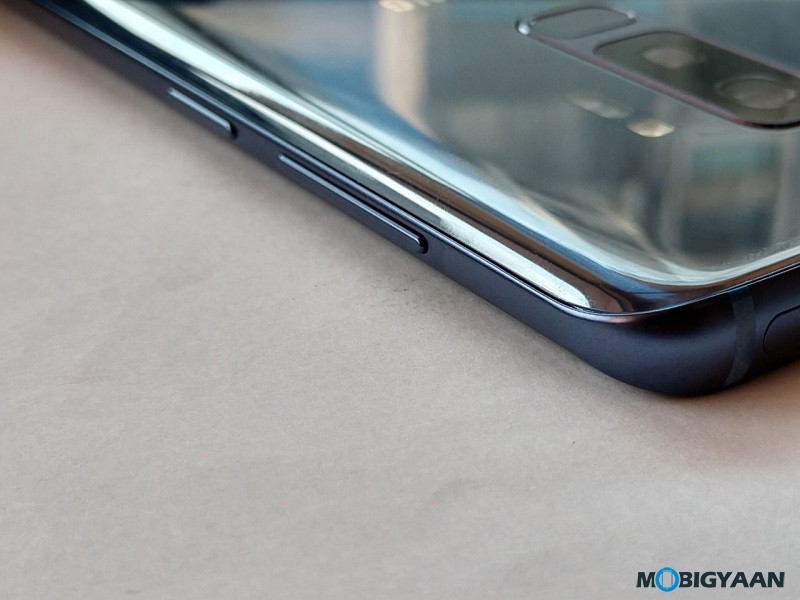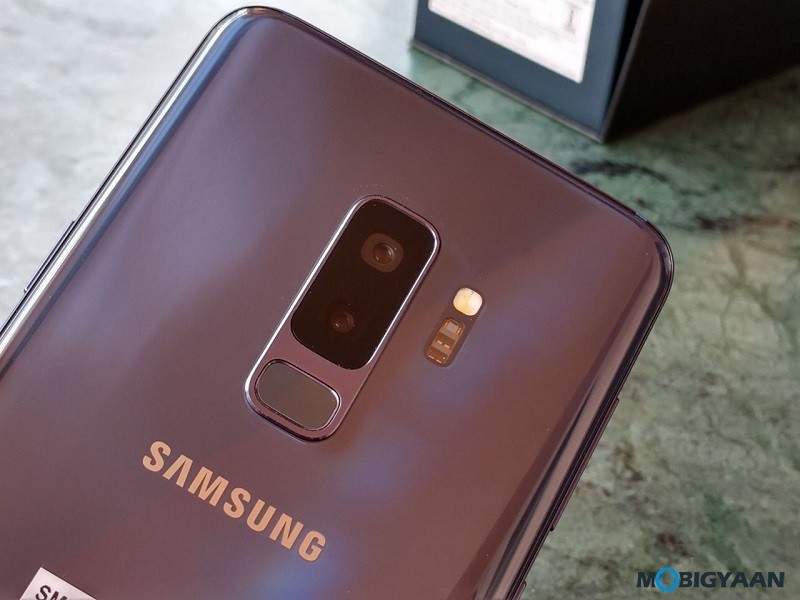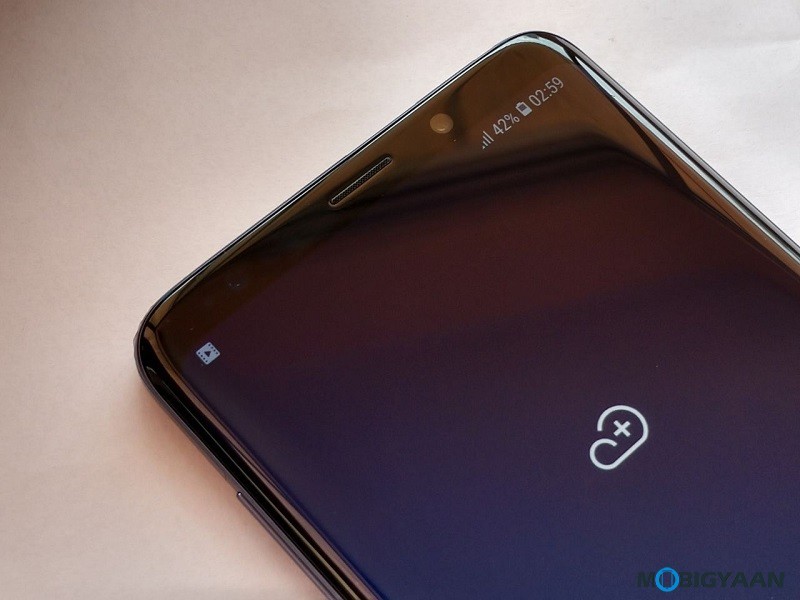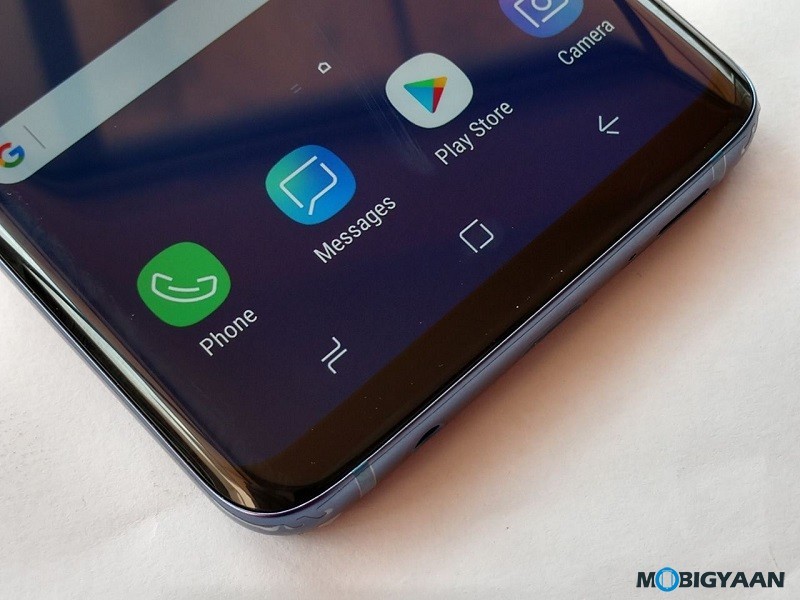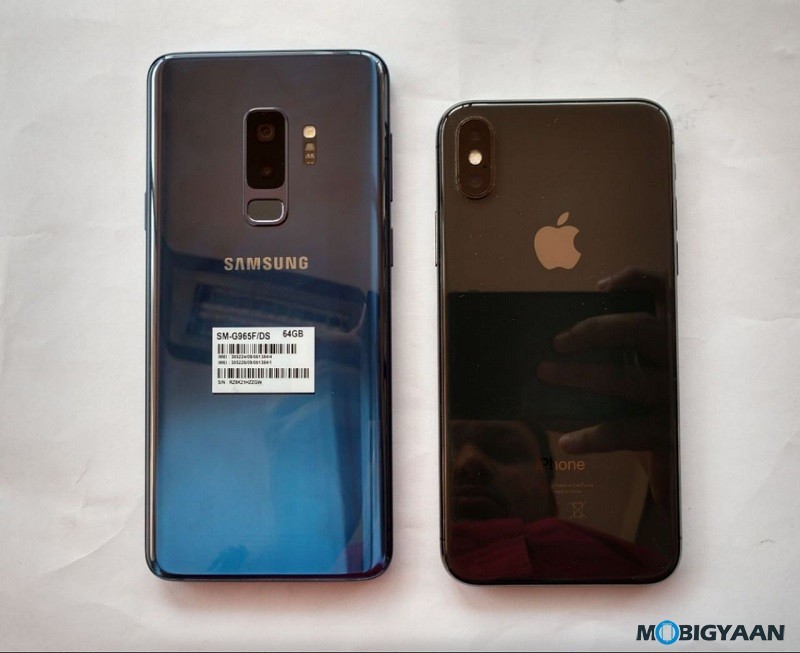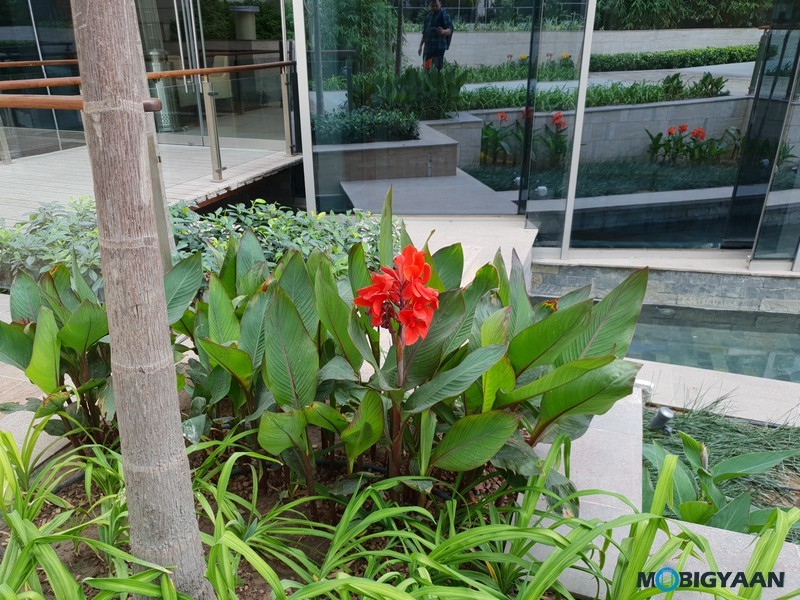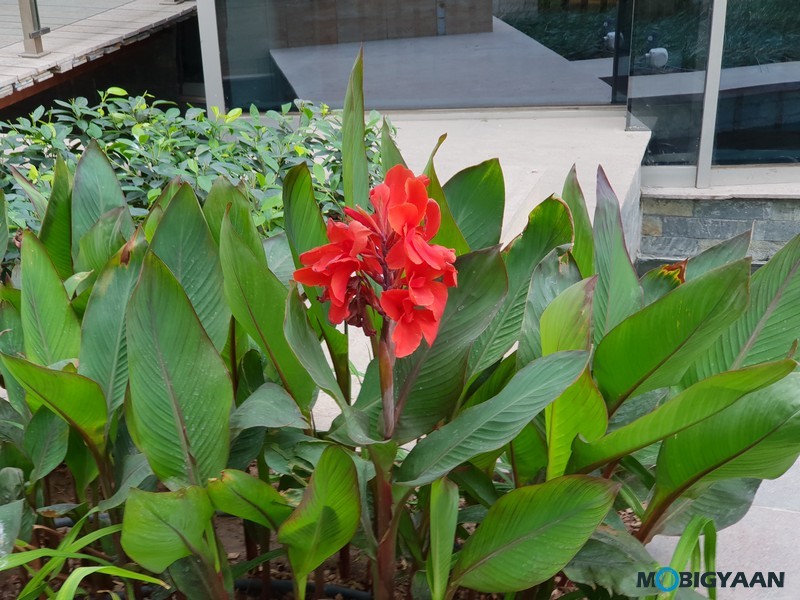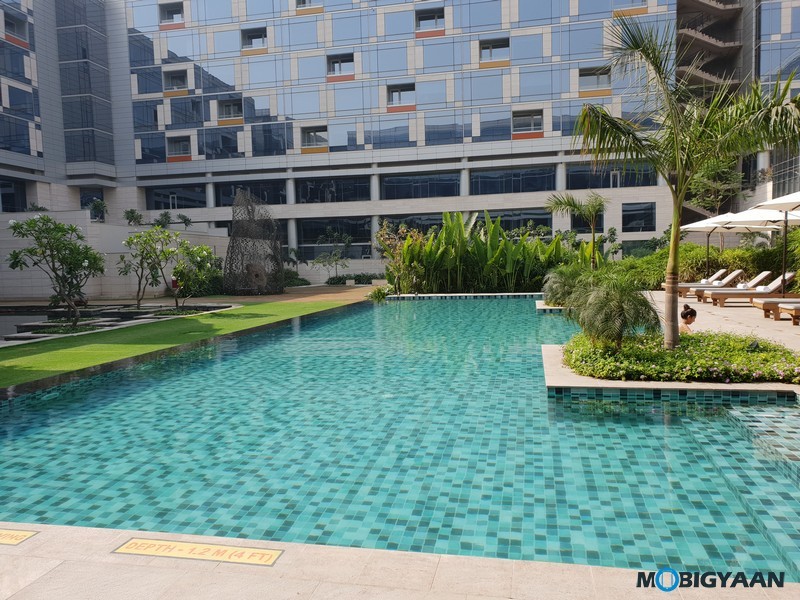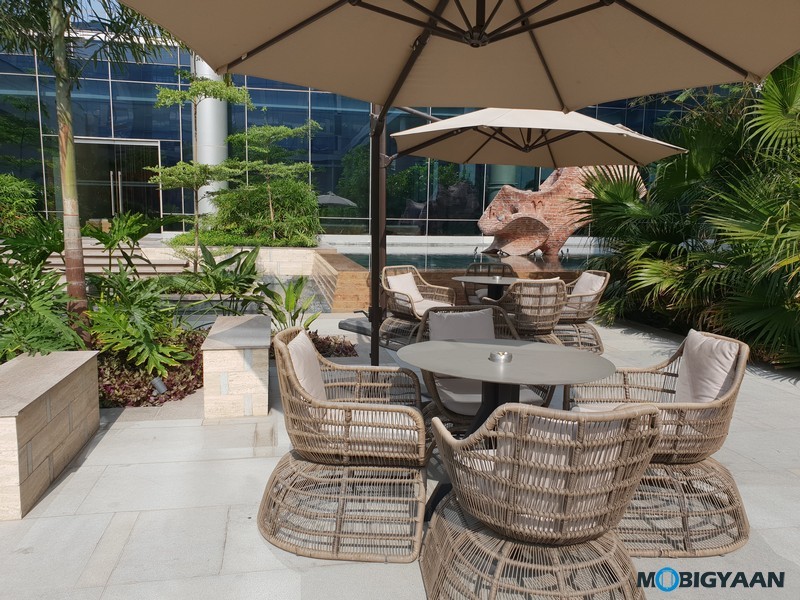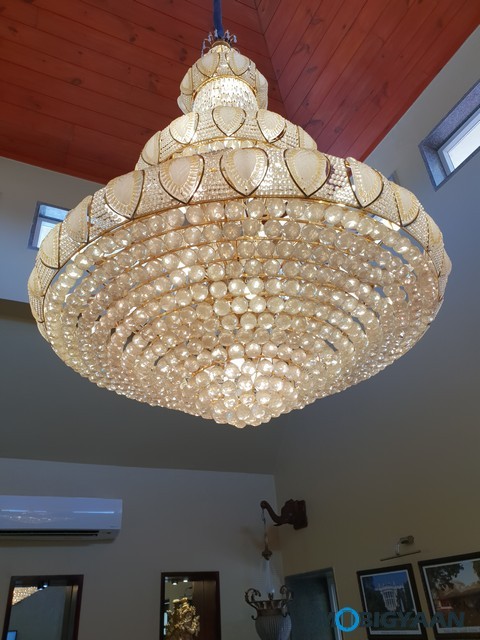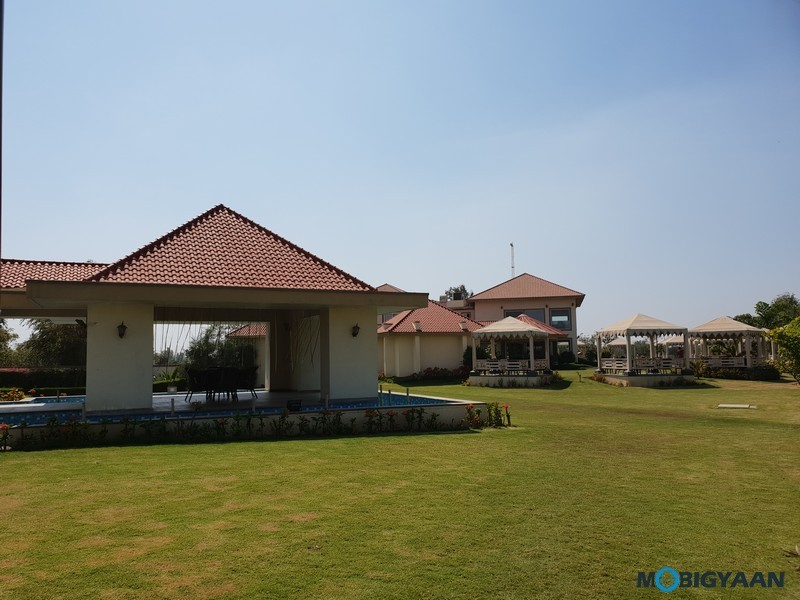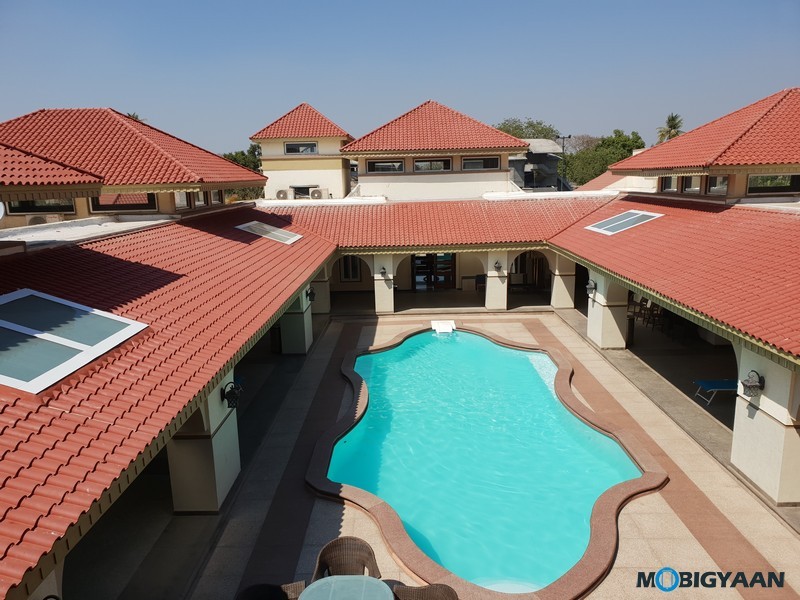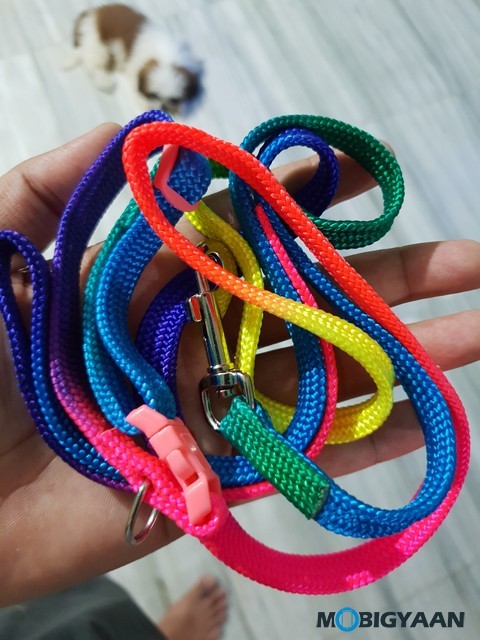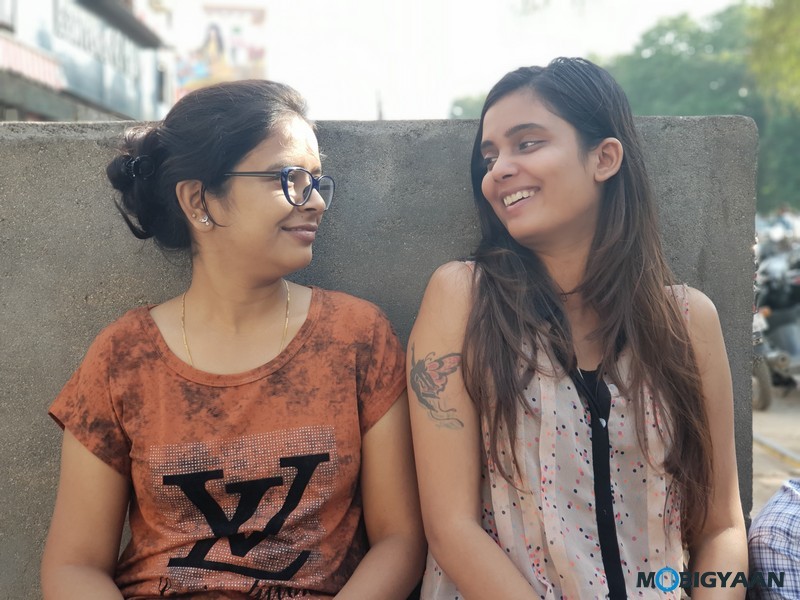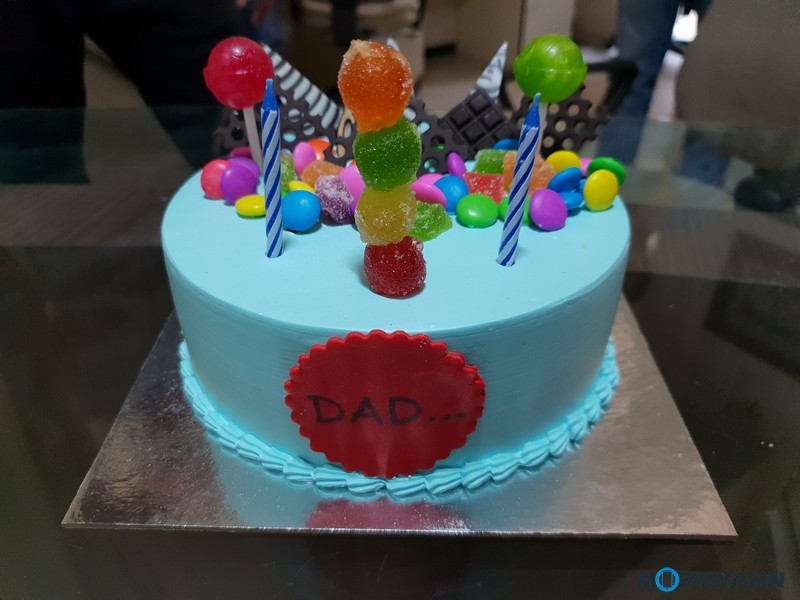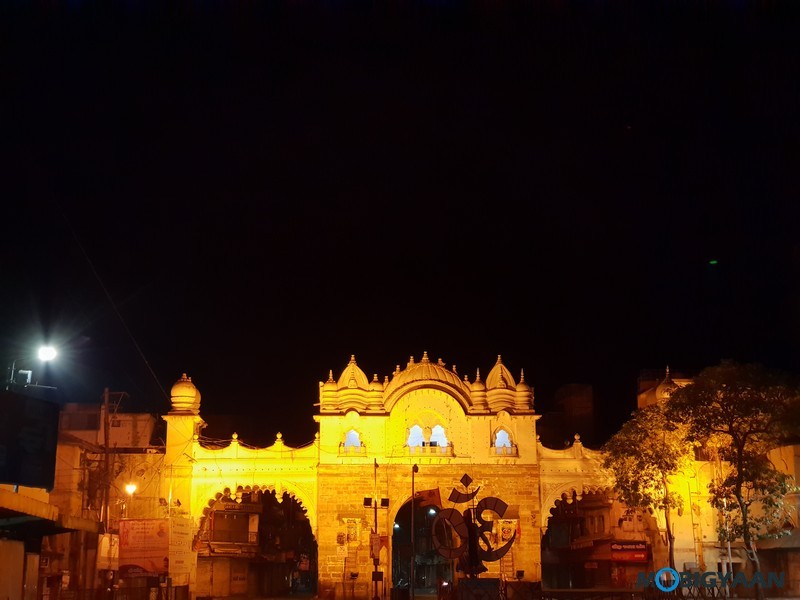The latest flagship from Samsung has not only to offer large display but a new dual-camera and a powerful octa-core chip that proves it’s better than the predecessor. What’s new to the phone is the addition of the super slow motion recording (960 fps), AR stickers, Intelligent Scan and more, find out in our Samsung Galaxy S9+ review.
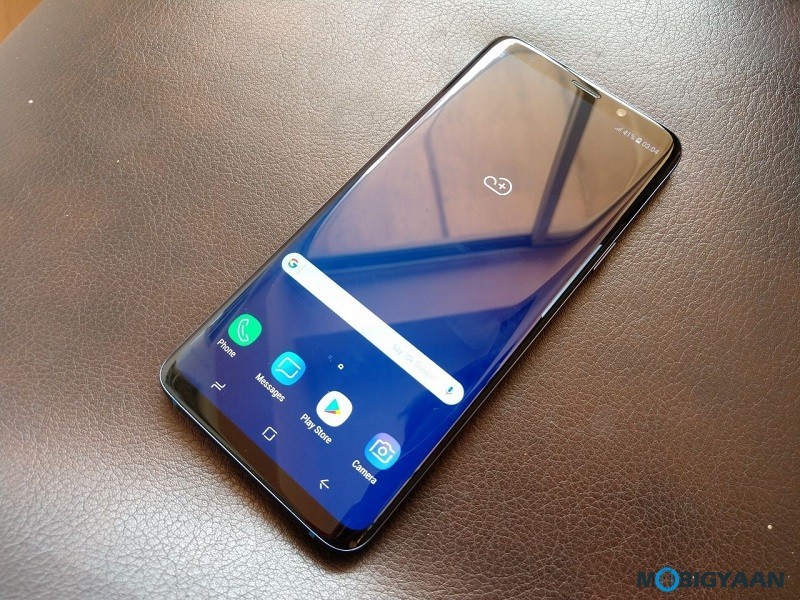
What’s in the Box
- Samsung Galaxy S9+ with built-in battery
- USB cable (type-C)
- Adapter (9V, 1.67A | 5V, 2A)
- AKG Earphones worth ₹6,500
- Type-C USB OTG Connector
- Micro USB to Type-C Converter
- Transparent Silicon Case
- SIM Tray Ejector Pin
- User Manual and Warranty Card
Samsung Galaxy S9+ Specifications
- Display: 6.2-inch Super AMOLED display, Quad-HD+ resolution (2960 x 1440 pixels), Always-on display
- Software: Android 8.0 Oreo, Bixby Assistant
- Fingerprint Scanner: Yes, at the back (below the rear camera)
- Iris Scanner: Yes
- Protection: IP68 Ratings (dust and water resistant), Corning Gorilla Glass 5
- CPU: 10nm octa-core Samsung Exynos 9810 or Qualcomm Snapdragon 845 octa-core SoC
- GPU: Mali-G72 MP18 OR Adreno 630
- Memory: 6 GB RAM, LPDDR4X
- Storage: 64 GB or 128 GB or 256 GB UFS 2.1, expandable up to 400 GB via microSD card (SIM2)
- Main Camera: Dual 12 MP + 12 MP (f/1.5 + f/2.4), OIS, LED flash
- Selfie Camera: 8 MP, f/1.7 aperture
- Cellular: 4G LTE network, 2x Nano SIM (GSM), microSD on SIM2
- Connectivity: USB Type-C, Wi-Fi 802.11 a/b/g/n/ac, GPS, Bluetooth 5.0, NFC
- Battery: 3,500 mAh
- Price: ₹64,900 (64 GB), ₹72,900 (256 GB)
- Availability: 16th March 2018
Design, Build, & Ergonomics
There’s no significant change in the design, you’ll find a glass body, metallic frame and curvy edges with the same Corning Gorilla Glass 5 on both sides. Samsung continues the bezel-less curvy design which is one of the main highlights of the phone.
Little changes include the fingerprint scanner which is now moved to the center just below the camera. The placement is itself a better position than before, kudos. Samsung retains the IP67 certification and wireless charging adding more features to its design.
This is the Plus variant meaning it has a larger 6.2-inch Super AMOLED display compared to the 5.8-inch display on the Galaxy S9. The screen has a Quad HD+ resolution (2960 x 1440 pixels | 18.5:9 aspect ratio) and it’s HDR10 complaint.
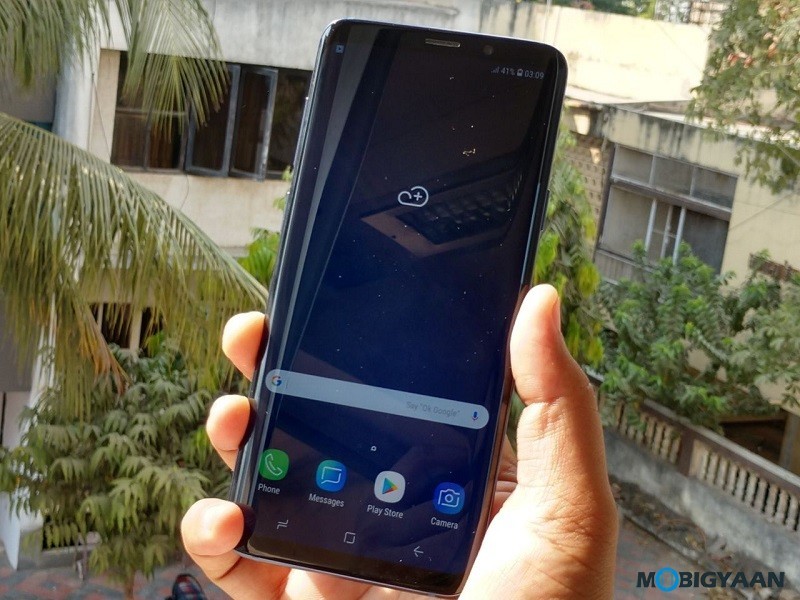
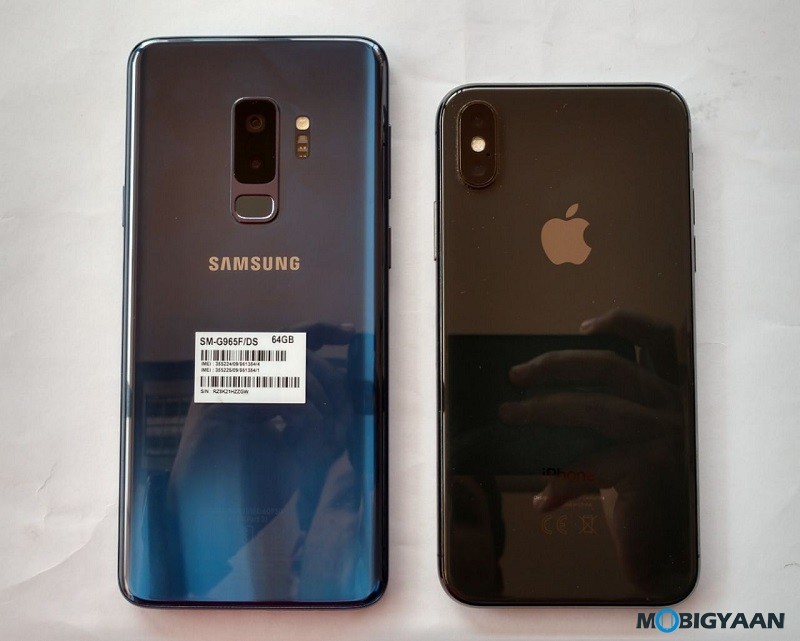
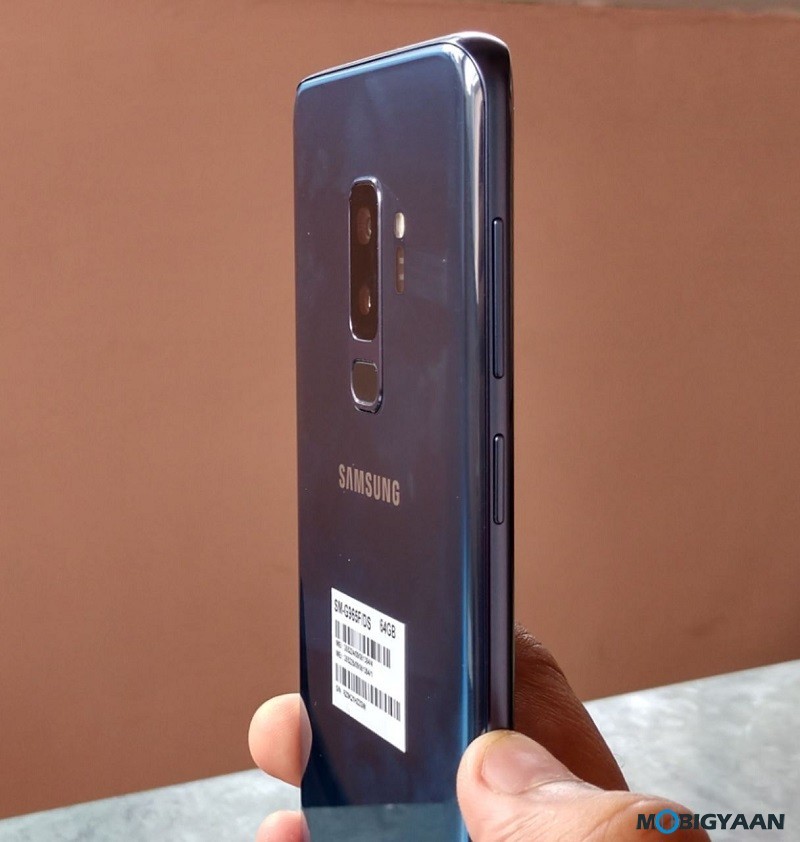
The bottom offers a fast USB 3.1 type-C port and a 3.5 mm jack. The Bixby key is still there to call your Bixby Assistant but still annoys every time if accidentally triggered.
Not just Samsung has retained the headphones jack, there’s a new addition to the loudspeakers, the Galaxy S9+ comes with stereo speakers tuned by AKG itself and supports Dolby Atmos. The earpiece speaker acts as a secondary speaker uniting as stereo speakers.
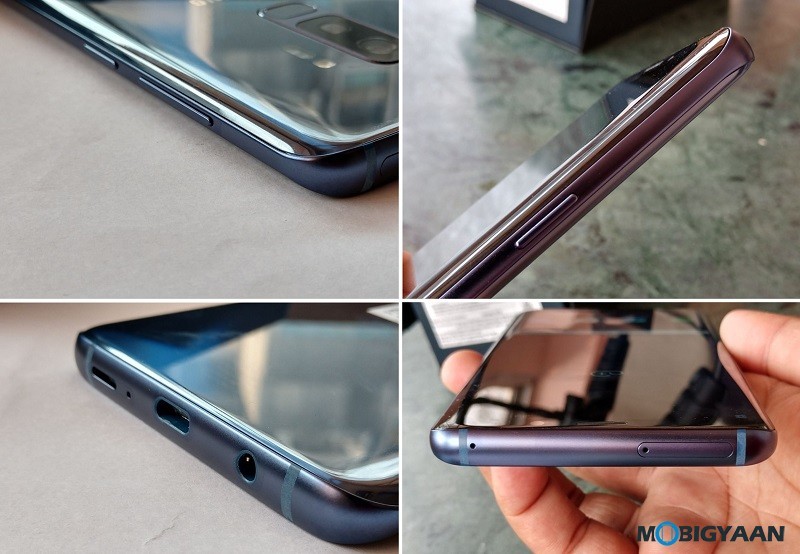
Display
The Super AMOLED display is one of the most standout feature of the Samsung Galaxy S9+ no wonder, it’s very similar to its predecessor. Samsung retains the Quad HD Super AMOLED panel (2960 x 1440) on a 6.2-inch display with curved edges and 18.5:1 aspect ratio.
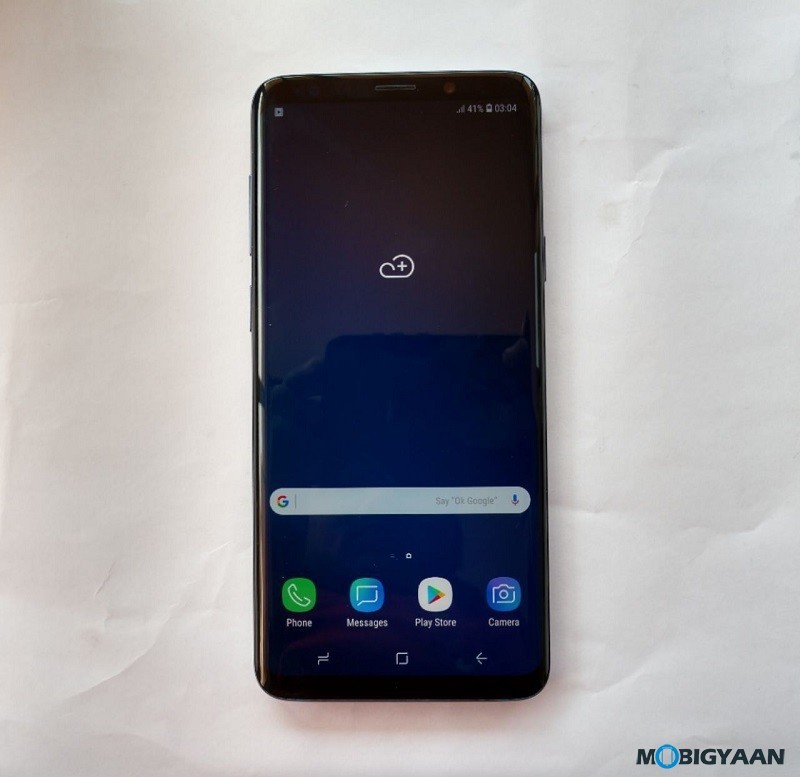
The content is incredibly sharp and crisp, the brightness is extremely high and can be usable in bright daylight even though the screen is reflective. The Colors are accurate, doesn’t look oversaturated, it supports HDR10 content which ensures that the display is future-proof. This is undoubtedly the best screen on a smartphone right now.
The display enhancements offer various screen modes – Adaptive display, AMOLED cinema, AMOLED photo, and Basic with Advance options that will let you adjust RGB values to balance the color. Other features include the Blue light filter, screen resolution, Full-screen apps, Edge screen settings, LED indicator toggle, and a few more.
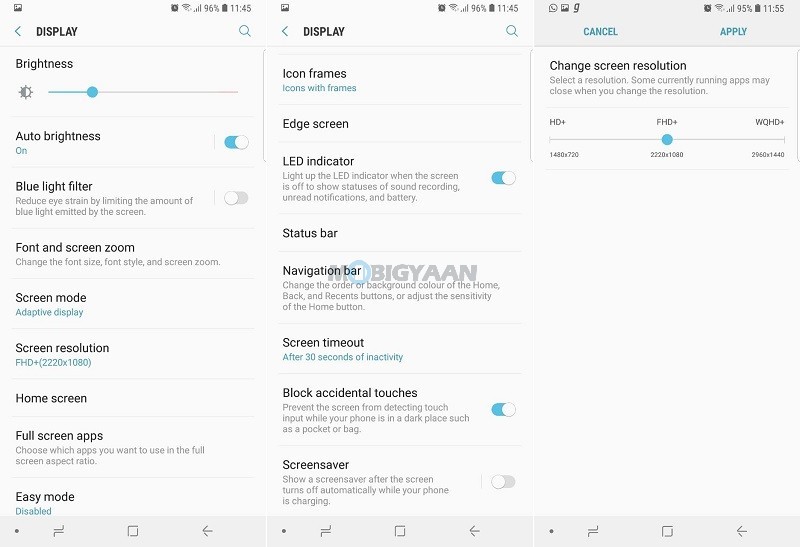
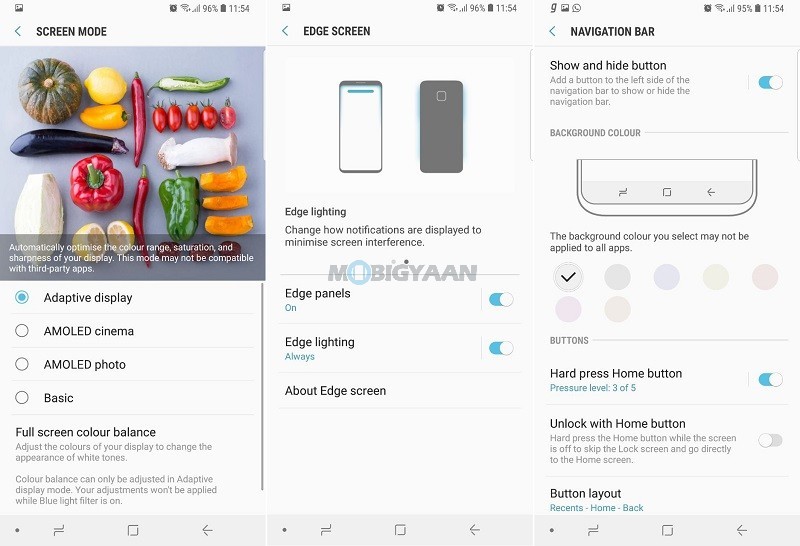
Software & User Interface
Moving to the software part, it’s running Android 8.0 Oreo without any big improvements. It uses the Samsung Experience Version 9.0 and a security patch dated 1st March 2018. We didn’t see any visual changes in the software, it barely differs from the Nougat on the last year’s Samsung Galaxy S8.
A bunch of Microsoft apps and a Facebook app are the only bloatware we found that can be removed if required. The interface is smooth, works flawlessly, but nothing like new, it’s same old interface we’ve seen on Galaxy Note8 and Galaxy S8. Previous Samsung owners may familiar with the Edge bar, Game Launcher, and a few apps from Samsung.
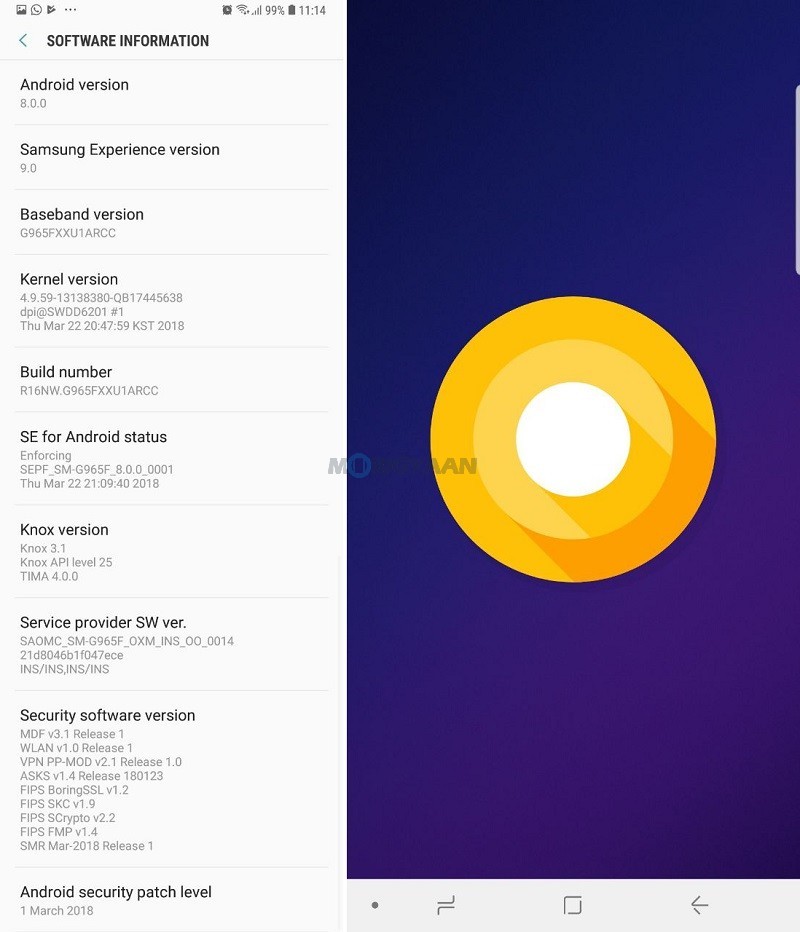
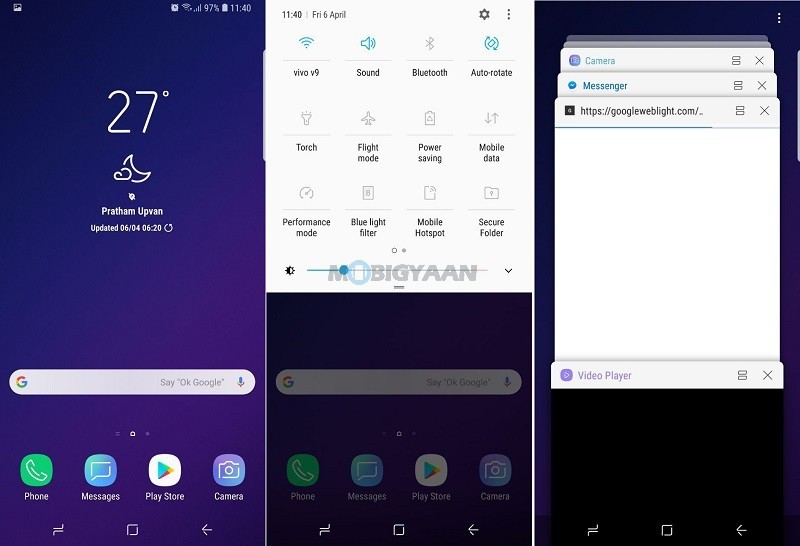
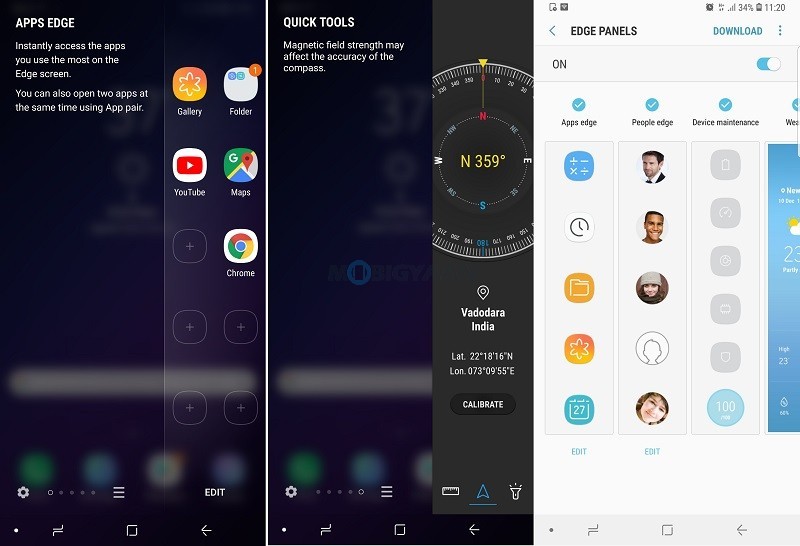
The Bixby key is still the most annoying thing on the phone, once you accidentally triggered, it will break the user experience. No matter what you are doing, either watching a movie, snapping pictures or playing games, the Bixby interferes unconditionally.
Talking about the Bixby assistant, it is not as reliable as the Google Assistant. I find the Google Assistant more friendly and faster than the Bixby, the Bixby sometimes cannot recognize the voice properly and slow at interpreting. Unless you are a Samsung fanatic and want to try something new, Google Assistant takes the lead.
Samsung brings a new ‘Intelligent scan’ feature which combines the iris scanner and the face recognition to unlock the phone. Although it is a bit slower, it works even in dark areas all it needs is your screen brightness to get some light.
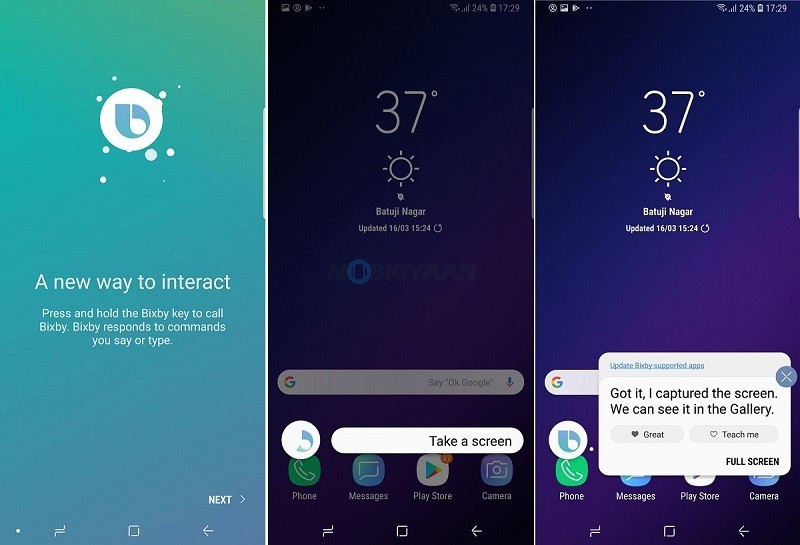
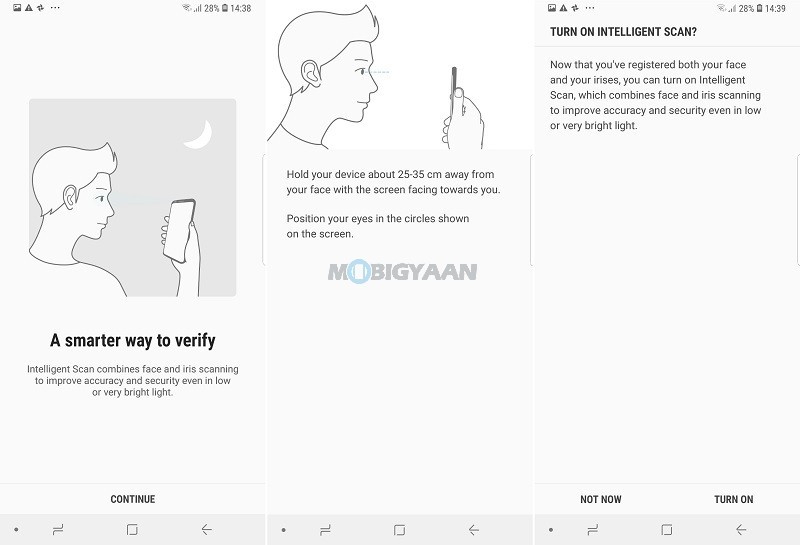
The Galaxy S9+ comes with the Samsung Pass app which is nothing but a password manager that frees you from entering the password everytime an app asks. It stores all your passwords and login information encrypted and secured by Samsung Knox and couples with your biometric data to verify your identity.
On the other hand, the traditional fingerprint scanner which is now placed more ergonomically works great, however, not the fastest in the world of smartphones.
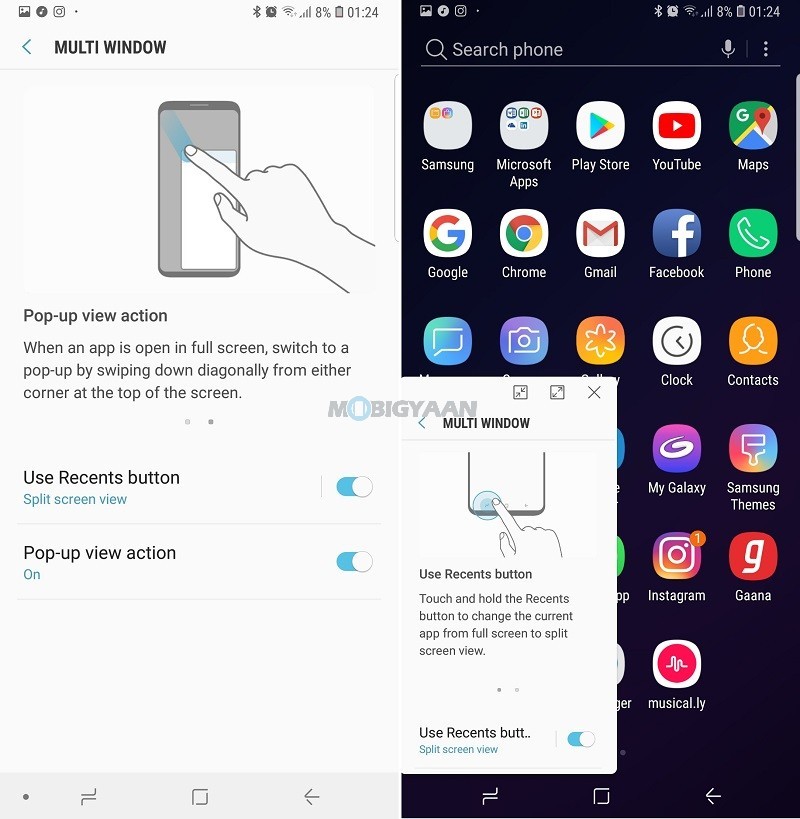
Hardware, Performance & Gaming
One of the most important aspects of the phone is the hardware inside. No wonder it ships with a powerful Exynos 9810 octa-core CPU and a large 6 GB RAM LPDDR4X-type, it is one of the fastest smartphones in the world. The other variant which equips a Qualcomm Snapdragon 845 chip is made available in the US and China. For the graphics, it has the ARM Mali-G72 MP18 (18-core) GPU.
Samsung Galaxy S9+ Key Specifications
- Display: 6.2-inch Super AMOLED display, Quad-HD+ resolution (2960 x 1440 pixels), Always-on display
- Software: Android 8.0 Oreo, Bixby Assistant
- CPU: 10nm octa-core Samsung Exynos 9810 SoC
- GPU: Mali-G72 MP18
- Memory: 6 GB RAM, LPDDR4X
- Storage: 64 GB UFS 2.1, expands up to 400 GB via microSD card (SIM2)
- Battery: 3,500 mAh (non-removable)
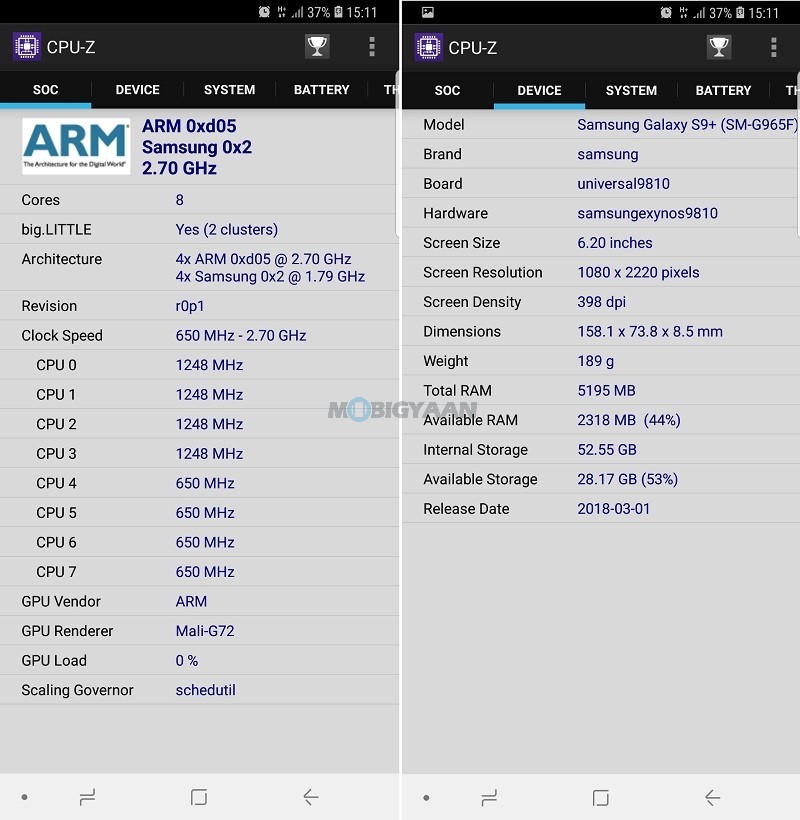
In the benchmarks, the CPU makes very good impression and delivers best values, tops out in the AnTuTu benchmark. We don’t have to say much, the numbers speak.
AnTuTu Benchmark
- 241,914 points
Geekbench 4
- 2,619 points (single-core CPU)
- 8,975 points (multi-core CPU)
- 6,395 points (GPU)
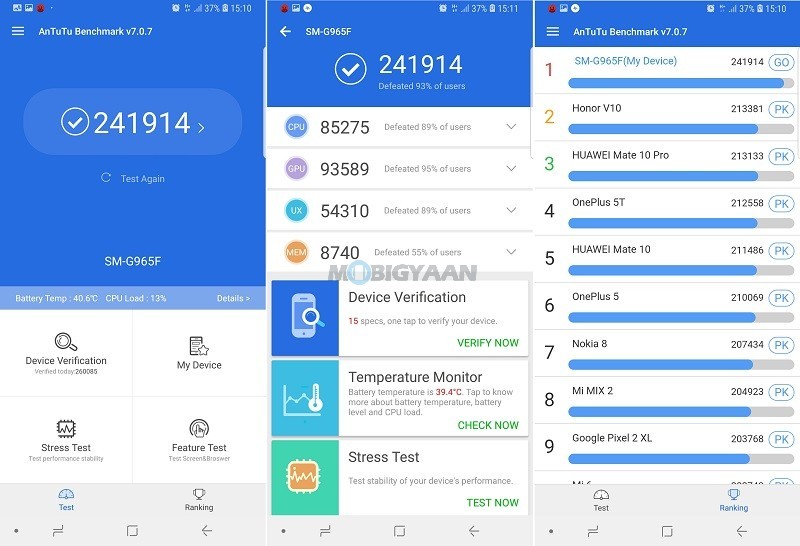
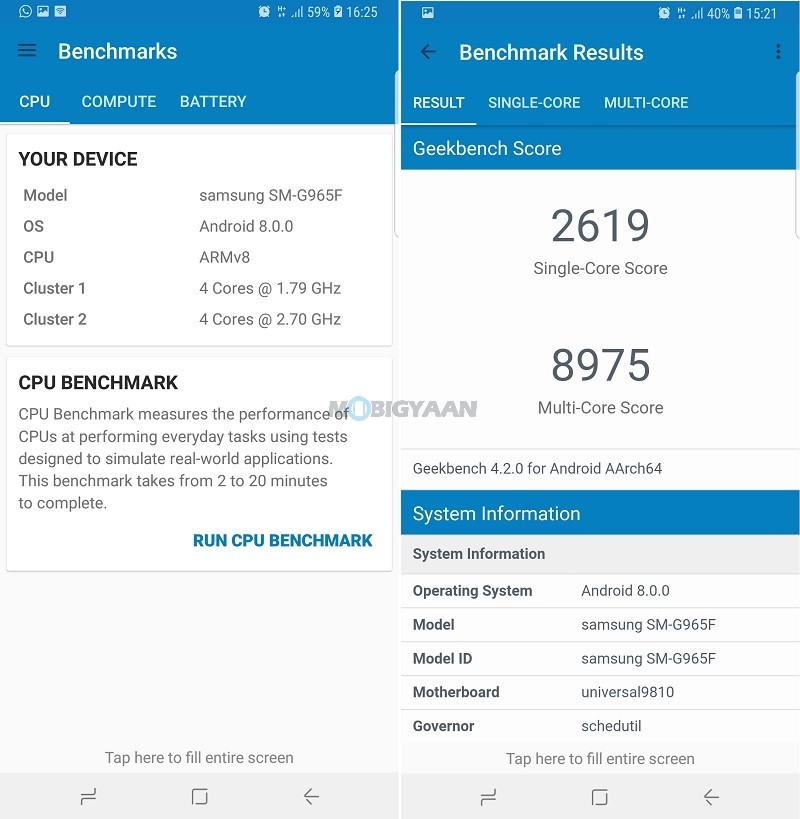
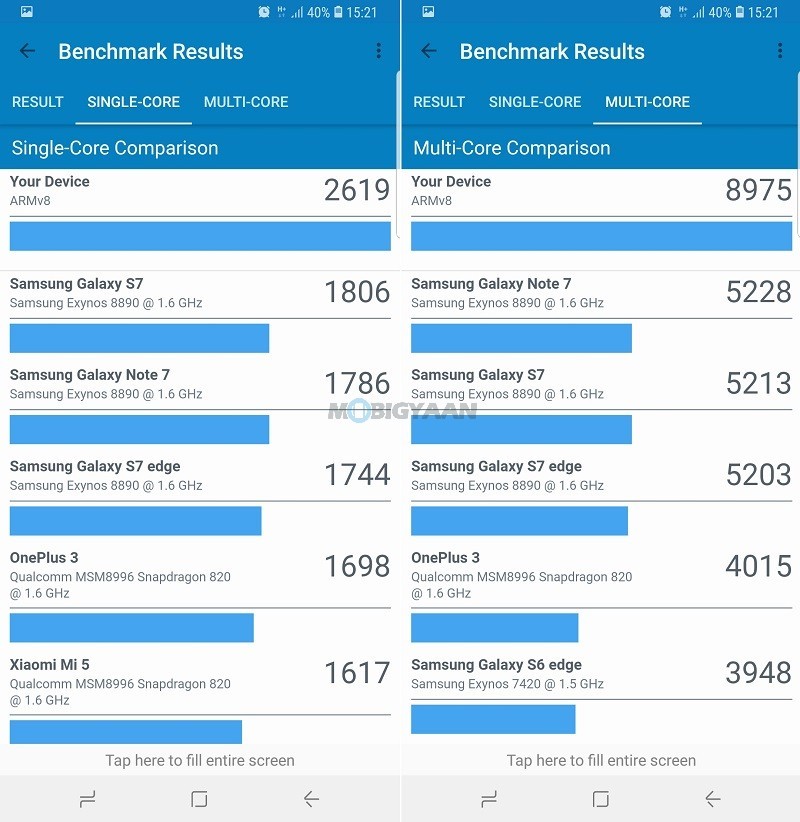

Storage & Memory Performance
We received the 64 GB variant of the Galaxy S9+ and it is equipped with the UFS 2.1 storage with microSD support for up to 400 GB. We were surprised with the RAM performance, it was faster than any other smartphone, also with the fast read-write transfers which are believed to be faster than its predecessor. Take a look.
A1 SD Bench
- 664.32 MB/s (Read)
- 215.66 MB/s (Write)
- 18,179.74 MB/s (RAM Copy)
AndroBench
- 827.49 MB/s (Sequential Read)
- 205.66 MB/s (Sequential Write)
- 131.17 MB/s (Random Read)
- 23.27 MB/s (Random Write)
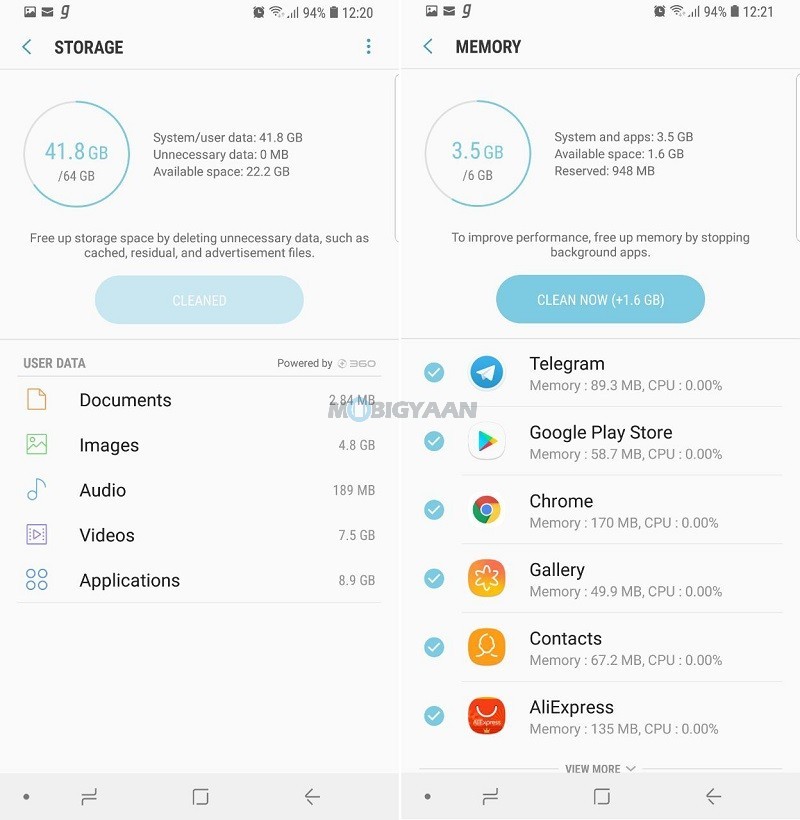
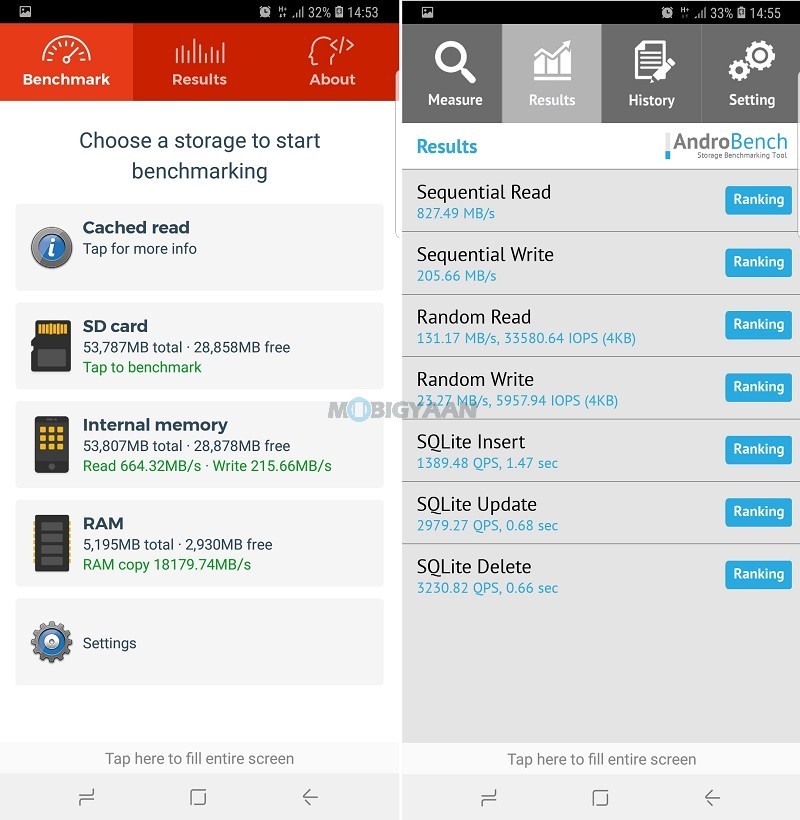
Cameras
The Galaxy S9+ is the first smartphone in the whole Galaxy S series that comes with a dual-camera onboard at the back. A similar configuration the Galaxy Note8 boast, but with the newly added AR stickers, AR emoji support, and the ability to record slow motion videos at 960 frames per second. Dual cameras mean you can take the bokeh style shots which serves the current smartphone camera need.
Samsung has upgraded the camera module significantly now comes with dual 12 MP cameras with f/1.5 aperture, the lowest possible aperture on a smartphone. It captures 28% more light compared to the predecessor Galaxy S8+. Both the cameras are equipped with optical image stabilization.
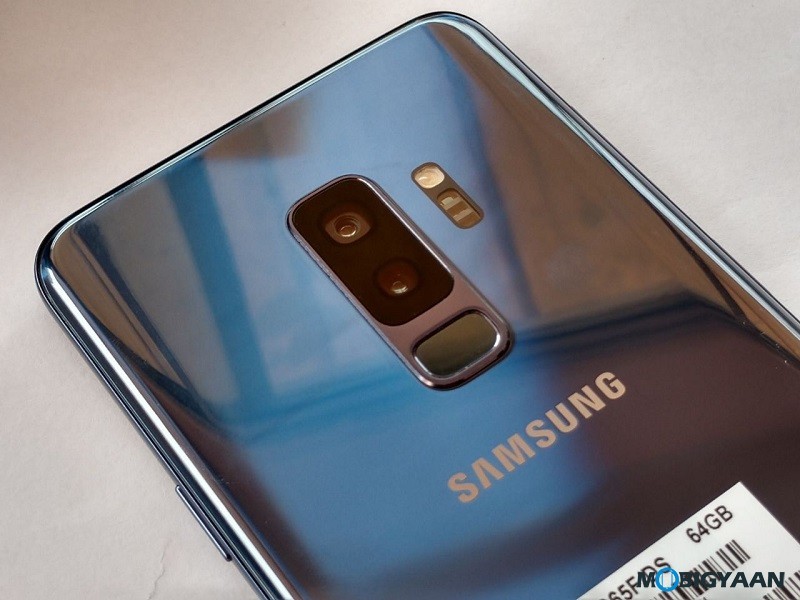
Samsung Galaxy S9+ Camera Specifications
- Camera: Dual (12 MP f/1.5 + 12 MP f/2.4), SuperSpeed Dual Pixel camera
- Sensor: Sony IMX345 Exmor RS
- Optical Image Stabilization (OIS): Yes
- Rear Flash: Single LED
- Features: Live Focus, AR Emoji, Super Slow Motion Capturing (960 fps), Pro, Panorama, Food, Hyperlapse, Sports, 2x Zoom, Geo-tagging, Tap to Focus, HDR, Slow motion (240 fps), Burst Shot
- Video Recording: Up to 4K @60 FPS, 1080p @60FPS, Slow Motion 720p @240 FPS
- Front Camera: 8 MP, f/1.7
- Video Recording: Up to QHD 1440p video @30fps
- Front Flash: Screen Flash
The Galaxy S9+ camera convinces with every inch of details, the daylight photography is incredible. Even in low-light situations, the smartphone does its job really well. The images retain its original colors, the rear cameras have a clear edge and can compete with the most powerful smartphone cameras currently on the market.
The camera finally captures the videos in 4K resolution at 60 frames per second, this is at a level of iPhone X, iPhone 8 and iPhone 8 Plus camera. Also new in the camera is the super slow motion video recording at a mind-blowing 960 frames per second (close to 1000 fps). Sony was the first to bring the 960fps recording in its Xperia XZs camera. While this is a great feature, however, it requires a plenty of light to create a quality video.
The video shoots in 720p resolution with options to shoot under multi-take or single take. The muti-take will let you capture multiple footages at 960 fps while the single take will take one video at a time. It has the same limitation of 1-second video capturing just like the Sony’s. The upcoming Xperia XZ2 will feature the same super slow motion feature but in Full HD resolution.
The new AR emojis is a great addition, however, appears to be a gimmick, it’s similar to the Apple’s Animoji. The Galaxy S8 camera also came with the stickers and now they added the Emojis which works on your facial movements in real-time.
Thanks to the Selfie Focus feature, you can now take bokeh shots relying on just single selfie camera. The 8 MP camera on the front side offers good quality images, it appears to be none other than the same camera used on the predecessor, but now optimized for Selfie Focus and AR Emoji. It can capture Quad HD resolution (2K OR 1440p) videos.
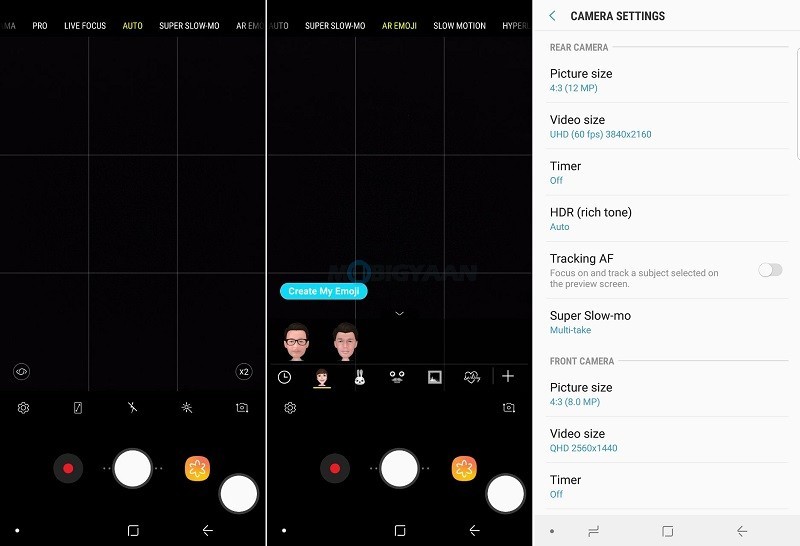
Samsung Galaxy S9+ Camera Samples
Samsung Galaxy S9+ Super Slow Motion Video (960 FPS)
Battery Runtime & Charging
There’s a lot more to say in the battery department, the Samsung Galaxy S9+ sports a 3,500 mAh battery which sounds to be decent for a flagship. However, knowing the battery life will amaze you for sure. Even the last year’s Galaxy S8 didn’t have any stellar battery performance, this time it’s worse than the predecessor. Yes, we didn’t get any good battery runtimes on the Samsung Galaxy S9+.
Out test suggests that the battery can survive 1 to 1.5 days on average use and with moderate use will eventually drain the battery on the same day. We turned on the power saving options to medium but it ended up in the evening on moderate usage.
The tests include a single SIM on 3G network, Sync, Always-on display, Edge Lightning, and biometrics (Intelligent Scan) turned On. Our usage includes Camera (photos and video recording), music player (Play Music), SMS, voice calling, WhatsApp, Facebook, Instagram, Telegram, and checking emails (Yahoo Mail, Gmail) on occassional use.
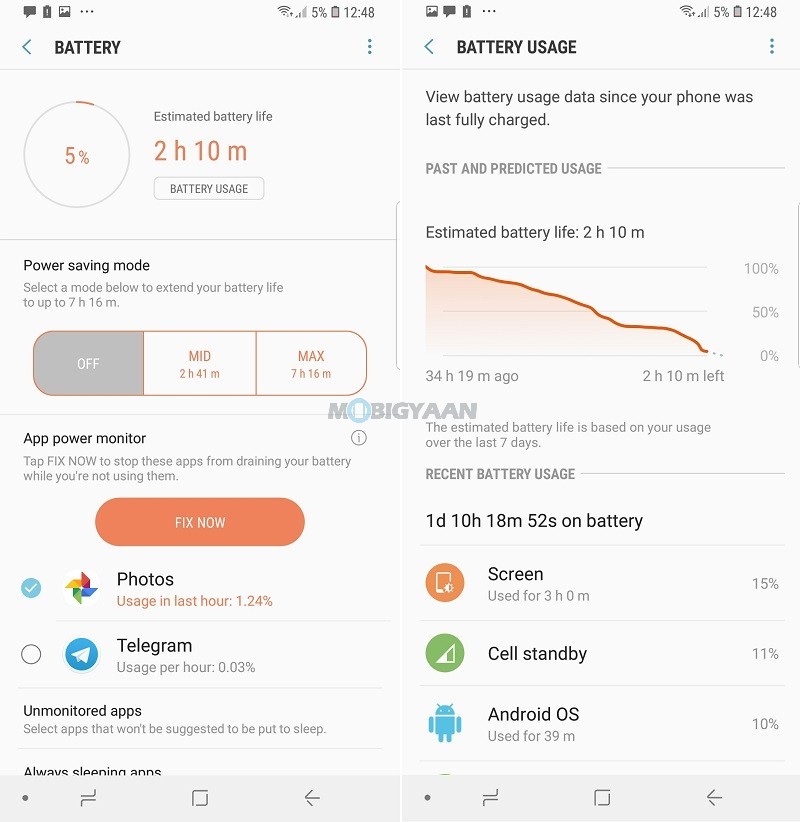
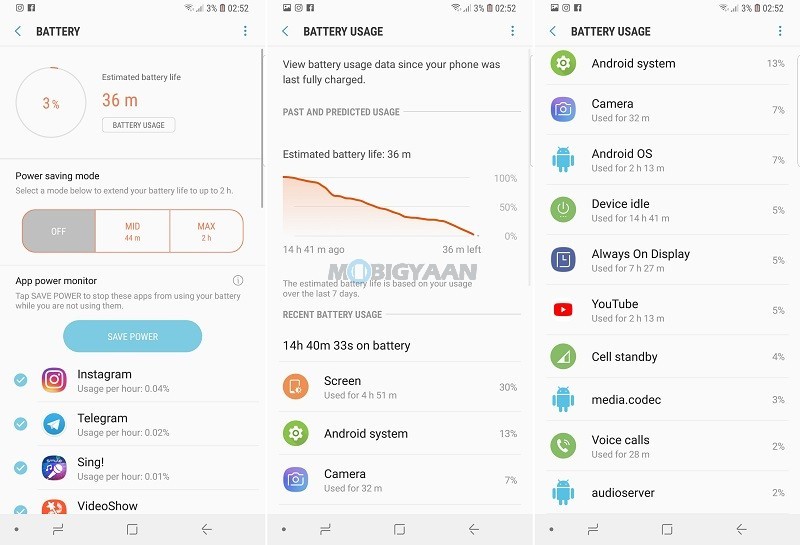
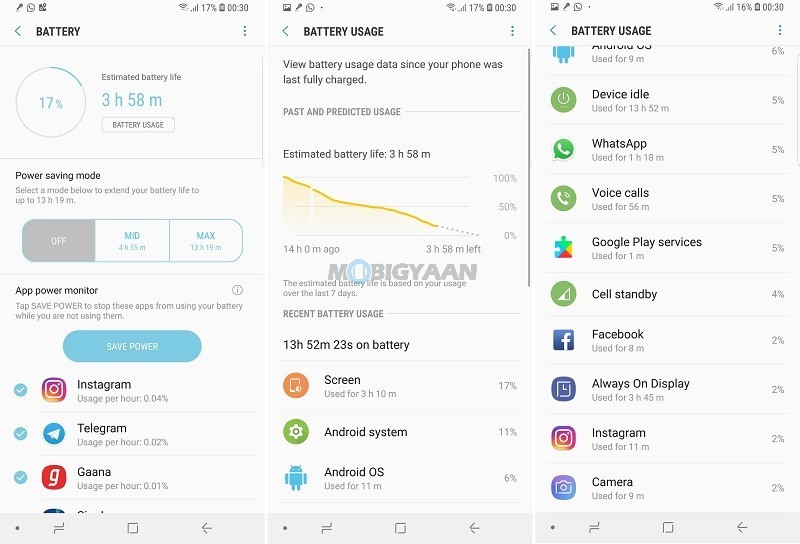
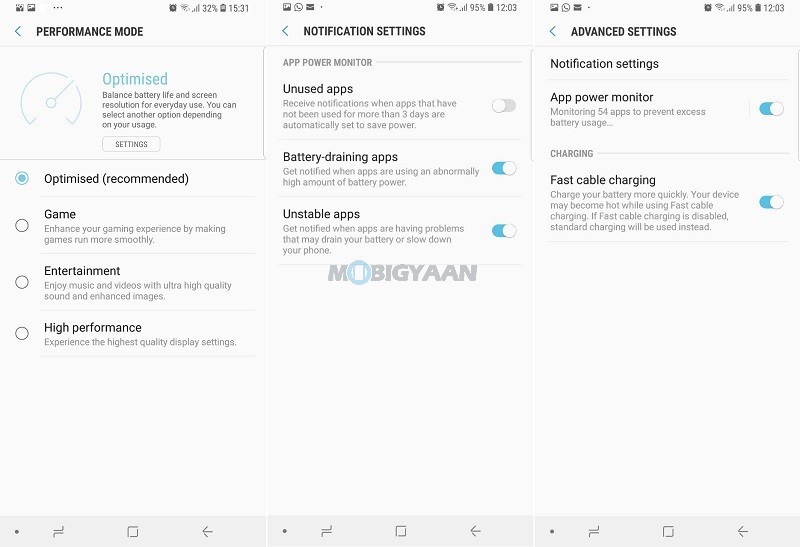
You can take advantage of the fast charging, however, the Samsung Galaxy S9+ is not the fastest charging phone in the world. We have seen better smartphones like the OnePlus 5T that charges way faster through its Dash charge.
Out test indicates that the charging takes about 110 minutes to 120 minutes for a full charge from 0% to 100%.
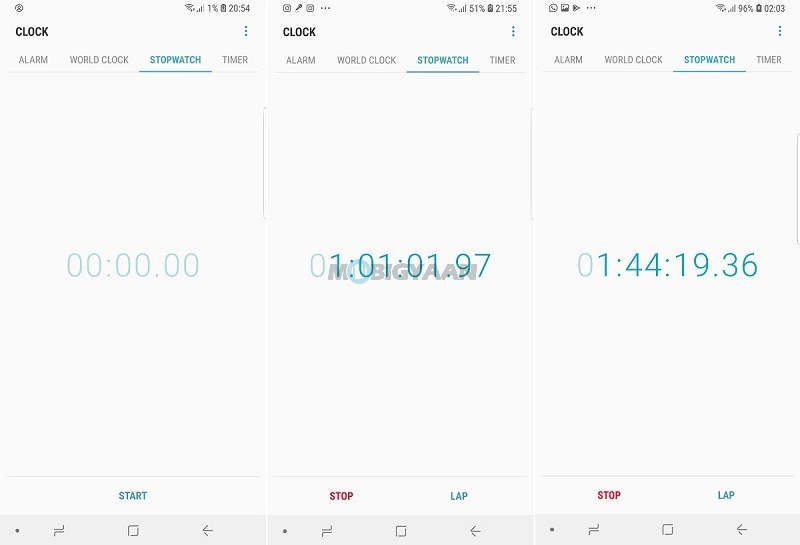
Verdict
Samsung once again manages to create a great smartphone, the Galaxy S9+ is now more refined than the last year’s Galaxy S8. A faster processor, a best-in-class display, a better-positioned fingerprint scanner, microSD support, loud stereo speakers, IP68 certified, and wireless charging are certainly a plus for this phone. It’s meaningfully improved in several areas but we don’t see innovations.
Cameras, to be honest, are one of the best in the market, pick any feature, Super Slow Motion (960 fps), 4K videos (60 fps), Live Focus (bokeh), AR stickers and emojis are those that you won’t find them easily on many smartphones. In addition to the cameras, the 2K AMOLED display is crisp and clear, and the brightest we have seen.
Moving to its battery life, we were surprised to see that the runtimes are even worse than its predecessor. Although the battery life is poor, there’s a room for the improvement in the upcoming software updates, till then you can hook up a power bank to support the battery since flagships aren’t always good at the battery backup.
If you’re already a Samsung Galaxy S8+ owner, there’s no strong reason to suggest it as an upgrade unless you want the new slow motion feature, slightly better camera and better CPU performance. For the rests, the Samsung Galaxy S9+ is currently the best Android smartphone you can get if you all have that chunk of money to spend.
Rivals
- Apple iPhone X (64 GB) – ₹83,499
- Google Pixel 2 XL (64 GB) – ₹73,000
- Sony Xperia XZ2 (64 GB)
Strength
- Stylish & Sturdy | Curved Design | Thin-bezel Display
- Excellent AMOLED Display | Very High Brightness
- Great Cameras – Live Focus, Selfie Focus, 960fps slow-motion, AR Emojis, 4K video @60fps
- Blazing Fast Octa-Core SoC, RAM, & Storage
- USB 3.1, LTE Cat.18, Bluetooth 5.0
- Wireless Charging
- MicroSD Support
- IP68 – Dust & Water Resistance
- Stereo Speakers Are Loud
Weakness
- Poor Battery Life

